Bringing home a new puppy is an exciting (and sometimes stressful) time for everyone – including your resident dog.
While you and your family have been planning and preparing for your new puppy, your current dog had no idea what was about to come home!
While some dogs take their new puppy “sibling” in stride like they’ve been preparing all their lives, many other dogs struggle with having a new addition in their homes.
Letting the dogs “just sort it out” between themselves often leads to long-standing distrust between your pups. Plus, an overly irritated adult can easily hurt a little puppy.
It’s best for the humans to intervene a bit on order to help set the dogs up for success. After all, we’re the ones with the big primate brains!
Luckily, there’s a lot of easy steps to take to help introduce a puppy to your resident dog. We’ll explain how to best set up your new and current dog’s introduction to get them off on the right footing together!
Why Doesn’t My Existing Dog Love My New Puppy?
People love puppies. In fact, we love babies of just about any species. The same isn’t always true for dogs, though.
In fact, many adult dogs would just as soon avoid puppies forever. Why don’t dogs share our love of puppies?

There are a lot of potential reasons that your dog-puppy introductions can hit bumps in the road. Knowing this ahead of time can help you prepare and ease your dog and puppy into a smooth introduction.
Your dog might be less-than-enthused about your new puppy because:
Sharing Isn’t Always Fun. Having a new puppy in the house means sharing things – from attention and food to toys and couch space. Most dogs aren’t exactly naturals at sharing their things.
Puppies take up a lot of your attention, and this is hard for dogs that are used to being single pets (or sharing your attention with their existing packmates).
Puppies are extra rude to boot, ignoring adult dog communication about giving and taking politely.
Puppies Play Rough. Puppies love rough-and-tumble play. The problem for most adult dogs is, like humans, they mostly grow out of that wild-and-crazy play style. Even adults that still love a good wrestle usually don’t have the constant love of play like a young puppy.
Puppies also tend to play a bit dirtier than adult dogs because they haven’t learned to control their teeth and bodies – to which your adult dog may be thinking “gross”!
Puppies Don’t Listen. Most adult dogs are pretty good about toning down playtime or giving each other a break when they need it. My Border Collie and his best friend Monty, for example, can communicate that it’s time for a break with just a glance.
But when puppies and teenage dogs play, they often miss out on the subtle dog calming signals that your dog puts out that say, “No, thank you. It’s time to calm down now.” Understandably, this can drive adult dogs bananas!

One other thing – your dog probably doesn’t hate your puppy because there’s a struggle for dominance going on in the home. This is a common misconception that can lead to misguided training techniques.
As Dr. Chris Pachel, a veterinary behaviorist from Portland, puts it, “The average 35 yr old person isn’t competing with a toddler for who runs the household or who pays the bills, and neither is your adult dog competing with your new puppy.”
Things only get harder if your resident dog is:
- Old. Playing with puppies can hurt, especially for senior canines! If your dog is in his golden years, he may not be up for a new pup at home.
- Small. Things are especially rough if she’s smaller than your new puppy. This can make puppy playtime scary.
- Socially Awkward, Undersocialized, Fearful, or Aggressive. Some dogs with “issues” regarding adult dogs do beautifully with puppies, but most of these “socially awkward” dogs don’t handle puppies well.
- Not interested in rough-and-tumble play. Puppies can already be obnoxious for a playful adult dog, but if they also can’t stand your pup’s play style, hanging out with them can be even more irritating! Just imagine being constantly tackled by an energetic six-year-old when you don’t really like being touched.
It’s also important to keep in mind that your dog can be beautifully well-socialized with other adult dogs, and still dislike puppies. My own dog, Barley, is an excellent demonstration dog with good social skills.
Yet he hates puppies.
My dog and I are on the same wavelength with this. I am really extroverted with other adults. But I don’t really know how to interact with little kids, and they makes me uncomfortable. I’d rather avoid small children, even though I’m generally a social person.
All of this isn’t to say that you should just give up on a harmonious home. You can have a new puppy and a happy older dog – it just takes a little bit of work.

Step One: Introducing a New Puppy To Your Current Dog
If at all possible, set up your puppy-dog introduction in a way that helps your puppy feel comfortable and lets your adult dog ease into the new relationship.
Don’t Choose the Wrong Pup For Your Household!
Of course, part of this success will hinge on picking the right puppy for your home. Make sure you know what you’re looking for when you’re searching for a new pal (whether going with a breeder or adopting a pup from a shelter) – or you might fall for a cute face that’s nothing but trouble!

For example… I was recently contacted by a client who owns two geriatric small-breed dogs. Both dogs are over the age of nine years old and are under thirty pounds.
The owner decided to adopt a 3rd dog, but when he brought home their new five-month-old German Shepherd, one of the older dogs was so scared that she expressed her anal glands and hid for hours. The other dog tried to attack the (much larger) puppy.
The owner was looking for advice on how to integrate her dogs.
My honest (and hard to hear) advice was: don’t.
This new puppy clearly wasn’t a good fit for her original dog, and the original introduction had gone horribly. While a bad first impression can certainly be repairable, the severity of this meeting and the lack of improvement since was not encouraging.
While a bad first impression could be remedied over time with training, the lack of fit with the rest of the canine household wouldn’t change.
It’s not an easy choice, but in this situation, it’s far kinder to the original dogs – let alone more practical – to return the puppy to the shelter so he can find a home where he fits in better.
First Impressions Count: Aim For Neutral Territory

Make your first impressions carefully. Ideally, introduce your dogs in neutral territory during a walk. Dogs can exhibit territorial aggression when being introduce in the home, so start the meet-and-greet outside where tensions won’t be so high.
This can be done by simply meeting with the dog and the puppy at the corner of the block and walking home on “Gotcha Day.”
1. Keep the dogs moving without pulling on their leashes by using long leashes (20 feet if needed), walking quickly behind the dogs, and giving as much slack as possible.
This can be some advanced leash handling, but do your best! A comfy back-clip harness can also help – it’s important to avoid tension, tugging, choking, or pinching that might confuse the dog or make him think that the other pup is the problem.
2. Allow them to sniff each other, but keep the focus on the walk rather than each other. This dramatically reduces social pressure for the dogs. On-leash greetings can be especially stressful for dogs, as being on-leash can make some dogs feel more trapped and skittish than they might normally.
3. Walk for about a block at least – more if your dogs seem uncertain. Watch for any tension, fear, or stiffness in either dogs. It’s more likely for your puppy to be scared of your older dog or overly pushy in play than tense or aggressive.
If you notice aggression in your puppy’s behavior, get help right away.
Your older dog may be tense, aloof, fearful, aggressive, or just a bit “awkward.” While awkwardness isn’t necessarily a huge deal, you might want to get help with your introductions if you notice any overt tension, fear, or aggression from your adult dog in the introduction.
In most cases, this parallel walk method works wonders for introductions – even with dogs that are less than socially savvy!
Then it’s time to bring the puppy inside.
Step Two: Careful Management
Dealing With Resource Guarding
Whenever you’re integrating a new dog into your home, it’s a good idea to assume that resource guarding is going to happen. Dogs don’t like sharing, and puppies can be quite grabby.

Help keep the peace by picking up any items that your dogs might squabble over. This generally includes:
- Food (start feeding on a schedule instead of free-feeding, dogs get used to it eventually)
- Treats
- Chews
- Extra-awesome toys
Some dogs might be a bit more prone to resource guarding than others. I’ve worked with many dogs that don’t just limit resource guarding to food or toys – some will get snappy if other canines try to share the couch or their owner’s attention. My own dog will lip lift at strange dogs if they try to get between him and me while I’m petting him.
If you’re seeing more serious signs of aggression like growling, snarling, snapping, charging, or biting, get help from a dog behavior consultant right away. They’ll help you determine if what you’re seeing is just normal reluctance to share, or something more concerning.
A dog who just lifts his lips when another dog comes near his bone isn’t generally a cause for concern. If that same dog charges the oncoming dog or bites that oncoming dog, we’ve got a problem!
Some dogs will eventually learn to share, but many multi-dog households have to carefully watch treats and food bowls forever. Manage the risk by picking up “hot items” as much as possible.
This isn’t dominance or jealousy – it’s generally a sign of insecurity. Only hire a trainer who will use rewards to counter-condition your dog’s response. This isn’t a time for corrections, pack leaders, or dominance.
Give Each Dog Their Own Private Space
Once you’ve got all of the valuables picked up, it’s also important to set up a safe space for each dogs.
Many owners choose to crate train their puppies, or at least use exercise pens or tethers to keep puppies within eyesight. This is great for your older dog, because it means your older dog gets a ready-made break from puppy time.
Keep an eye on your dogs’ interactions. If you notice that one dog is getting fed up with the other, don’t just “let them sort it out.” Separate them using a dog crate for the puppy, baby or dog gates, canine exercise pens, or tie-downs and give both dogs something to chew on – stuffed Kongs are generally best.
This isn’t to say that you can’t let your older dog dole out a few appropriate corrections. It’s often more effective for the dogs to communicate within reason than to have you intervene – just don’t let it go too far. You don’t have to be the Fun Police – but you also can’t just trust that your dog is a natural kindergarten teacher.
Make sure you’re always monitoring Lewis & Clark for a while before you let them hang out unattended.
Learn a Lesson from My Mistakes
When my dog Barley first met our foster Boxer puppy Mia, he was absolutely horrified. He growled and stiffened every time she came close.
At just five weeks old, she was completely oblivious. She yelped, tried to nurse on his tail, whined, nibbled his toes, and tried to climb all over him while he did his very best not to hurt her. Poor Barley was miserable.
I have no doubt that if I hadn’t intervened within seconds of their first meeting, Barley would have hurt her.
As soon as I realized that Mia was driving Barley nuts, we set Mia up in a nursery in the bathroom. Every few hours, I put her in the bathtub and let Barley come over. If he looked at her or showed signs of relaxation near her (like blinking or softening his ears), he got food. Mia was kept at bay with the tub’s walls and Barley was free to leave if he needed. We didn’t really allow Mia and Barley out together at all for the two nights that we had her.
If we’d kept Mia for longer, I would have worked on teaching both dogs to go to a bed away from each other, teaching Barley to move away when he was irritated, and teaching Mia more appropriate play styles. But for a five-week-old puppy and two nights, the bathroom nursery was a more realistic choice.
Some dogs know to be gentle with puppies. But most dogs don’t, especially dogs that have never been around puppies before.
When Barley next met a puppy, a ten-week-old Golden Retriever, he handled it a bit better. He knew that I’d come rescue him (by scooping the puppy up and putting her away) if he got tense. It also helped that the Golden Retriever was much less pushy and, at ten weeks old, could “read” Barley’s body language far better than a puppy half her age.
Knowing that he had backup gave him the confidence to just move away when the puppy was bothering him, rather than snarling at her.
Still, if the puppy’s antics went on for too long, he would snarl at the puppy. If the puppy didn’t back off at his snarl, he’d air snap (bite the air near the puppy without making contact) at the puppy.
This can be pretty scary for the puppy and can even teach the puppy to be scared of all adult dogs.
Seeing how much difficulty Barley has with pups, if and when we get a puppy, we will make sure not to leave Barley unsupervised with the puppy until it’s at least six or eight months old.
Most new puppy owners should do the same. If you can’t supervise playtime, it’s generally best to keep the dogs separate.
Try not to blame your older dog for this difficulty. Be compassionate and try to help out your existing dog. Babies are exhausting!
Don’t Forget: Pushover Dogs Need Your Backup Too!
On the flip side, some dogs seem incapable of giving a correction to a puppy. These “pushover” dogs need your help just as much as the irritable Barley-types.
Even if the pushover dog is doing ok, she’s teaching your puppy a bad lesson – that it’s ok to harass adult dogs with impunity. This can get your puppy into serious trouble later at the dog park!
Rather than letting your dogs teach the lesson (which might not be the lesson you want your puppy to learn), set the boundaries that you’d like your puppy to respect. Just be sure to set those boundaries gently, rather than enforcing rules with violence or fear.
Attach a leash to your puppy’s back-clip harness while the dogs are out together if you’ve got a pushover adult dog. That way you can use the leash to gently remove the puppy. If the older dog comes back for more, then it’s ok to let the play continue. Over time, you can teach the puppy to call away from other dogs using the pulling-on-leash technique.
Step Three: Reward Good Behavior as it Happens
This step is really easy, but it’s also really easy to forget!
Many of us are quick to scold our dogs and tell them when they’re “wrong,” but we forget to let them know when they’re “right.”
My favorite way to teach this skill to owners is the SMARTx50 training method, pioneered by Kathy Sdao. Essentially, every time that you notice your dogs doing something that you like, your job is to See, Mark, And Reward (SMAR, the T stands for Training).
Mark by saying something consistent – most trainers use “yes” or “good”, but you can use any word you like – or use a training clicker. Then reward the dogs with something that they really enjoy. Treats are generally the best bet here, but praise or petting works for many dogs.
You might not want to introduce treats into your dog-and-puppy playtime, but you can See, Mark, And Reward when the dogs share sleeping spaces, swap toys, or disengage from tense situations.

In fact, one of the biggest things that I see skilled trainers doing that most people miss out on is rewarding the dogs for de-escalating a situation.
So if one of your dogs chooses to walk away when the other doesn’t want to play, that’s a great time to reward them!
The reason why most owners fail to reward their dogs with these kinds of good responses is that they may not be fully aware of dog body language, and don’t realize when their dog has skillfully de-escalated a tense situation. Make sure to read up on your dog calming signals so that you can better See, Mark, & Reward these kinds of situations!
Dogs don’t come with good manners (neither do toddlers). It’s your job to teach them what’s nice and acceptable. The more good stuff you show them, the more good stuff you’ll get!
Step Four: Teach Skills That Make Life Easier
Managing a multi-dog household isn’t always easy.
Crate training is helpful to mitigate resource guarding, enforce naptime, and generally keep the peace.
Teaching each dog a hand target and a “go to mat” or “go to bed” behavior is another smart technique for juggling multiple canines.
A hand target (having your dog tap his nose to your open palm) can help you move each dog separately around the house.
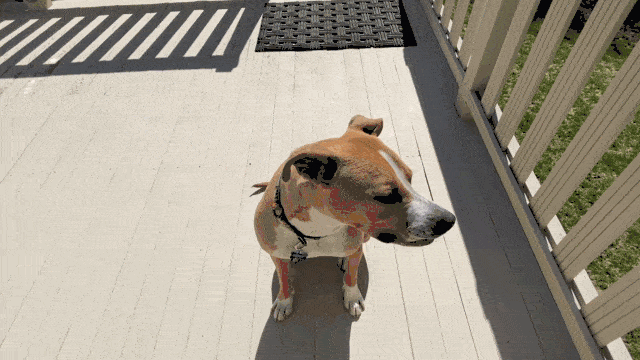
Meanwhile, a “go to mat” helps send the dogs away from you, the bed, or each other when needed.
If you’re not sure how to teach your dog to hand target, you can check out the video below:
Teach your dog to respond to a cue when you say his name and the cue, rather than just the cue – or use different words for each dog. Otherwise, it’s easy to end up with two dogs who actually need space from each other lying on the same bed!
In my house, I use “boop” to cue a hand target for Barley and “touch” for all of my foster dogs. This helps keep everyone straight!
“Leave it” and “drop it” can also help teach dogs to navigate shared resources with grace. If you teach your dogs just four skills, make it these four.
Training multiple dogs is also a bit harder than training one dog. Make things easier on yourself by training one dog at a time.
What About Introducing a Puppy to a Group of Dogs?
If you’ve already got a few resident dogs, the process is much the same – only a bit more complicated.
You’ll still go through all of the steps above, but you’ll do them with each dog in turn. A group of adult dogs that already know each other well will intimidate all but the most confident puppy. So instead, break up the meet and greets!
Doing each introduction separately will not only keep your puppy more relaxed, but will allow you to monitor each interaction more closely.

What About Introducing an Adult Rescue Dog?
The steps for introducing an adult rescue dog to your resident dog, again, are almost exactly the same.
You don’t have to be quite as worried about the dogs misreading each other, but fights can escalate very quickly between adult dogs.
Many socially savvy adult dogs can be introduced after a quick parallel walk. Pick up the food and favorite toys, and they’ll be fine.
But if your dog isn’t socially savvy, introducing two adult dogs can require just as much babysitting as introducing an adult dog to a puppy.
How did you introduce your new puppy to your resident dogs? What bumps in the road did you hit? Let us know in the comments!
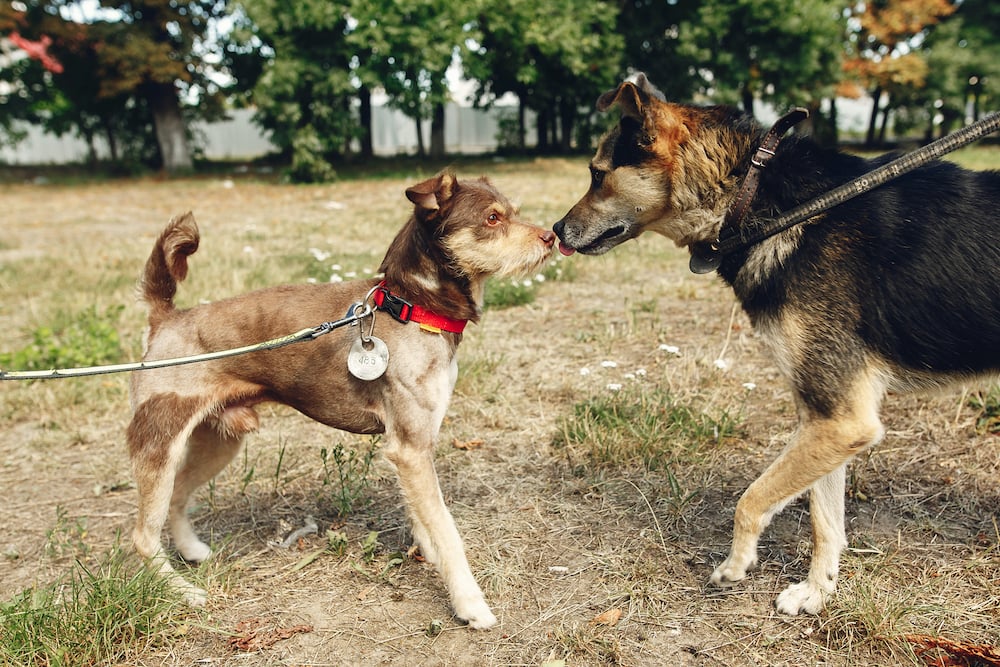



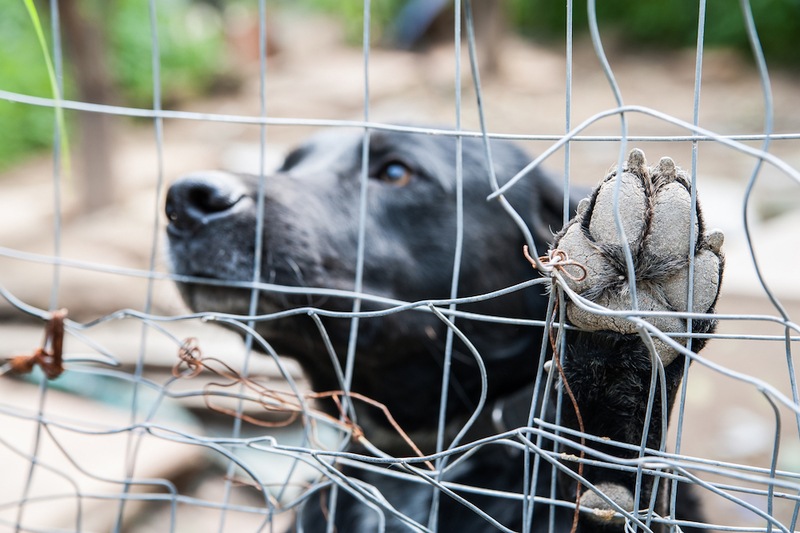
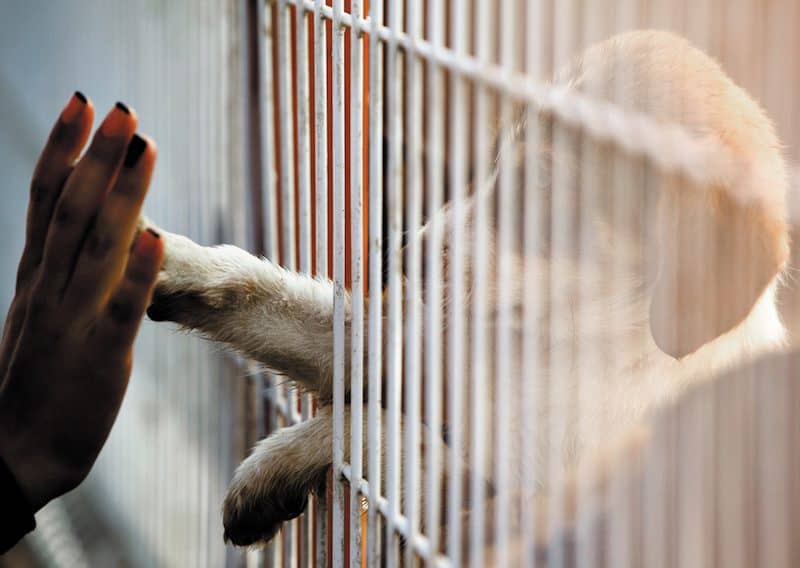
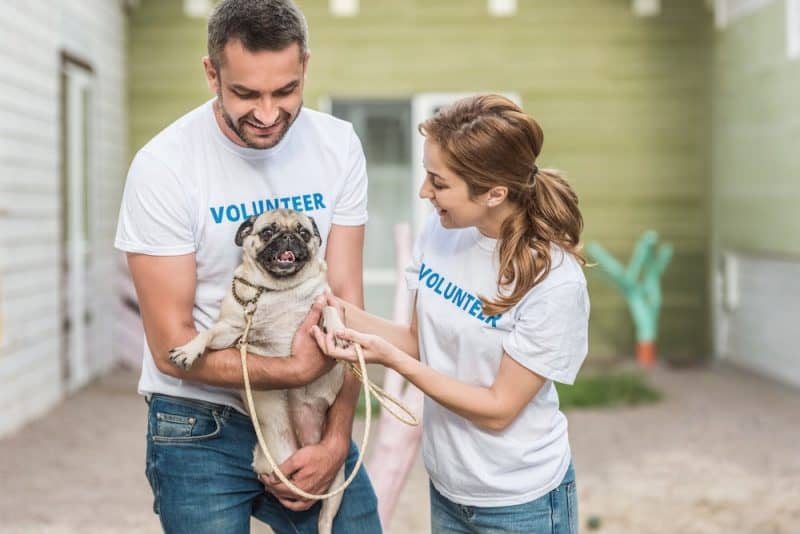

Leave a Comment